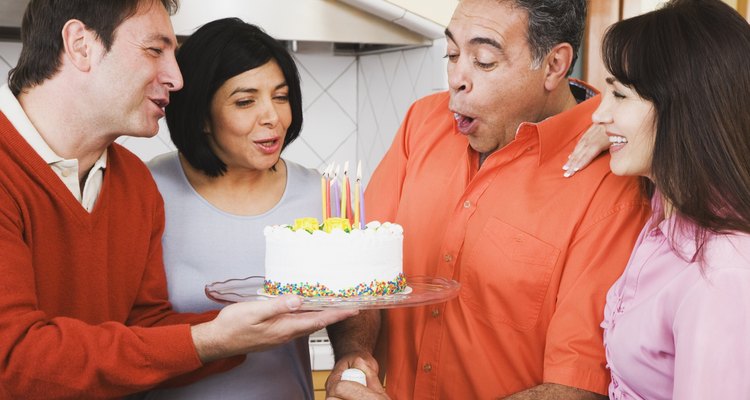
Hill Street Studios/Blend Images/Getty Images
Wax paper, also called paraffin paper, is a moisture-proof sheeting with many food-preparation uses. Many cake recipes call for a paper-lined pan to prevent the batter from sticking. While silicone-coated parchment paper is more common, baking a cake on top of wax paper is not harmful. Using this method allows you to eliminate added oil often required to grease the cake’s pan.
Wax Paper and Heat
Wax paper’s coating is not heat-resistant and begins to smoke it you place it directly in the oven. Most wax paper containers instruct you not to use wax paper for baking to prevent the coating from burning. In addition, at high temperatures the wax can transfer to food and pans. While the wax is food-safe, it does slightly affect the flavor. When waxed paper is subjected to heat with batter poured over the top, however, the cake prevents it from reaching burning temperatures. This keeps the wax from transferring to the cake or the pan as well. In cookbooks, particularly from the 1950s and earlier, the recommendation to line a cake pan with wax paper is common.
Lining the Pan
For a square or rectangular pan, cut a sheet of wax paper to fit the pan’s exact interior measurements and set it in the bottom. If you are baking a round cake, flip the pan upside down and place a piece of wax paper over it, large enough to cover the surface with extra hanging off the edge. Trace the shape of the pan on the wax paper with a pencil. Cut just within this line, creating a circle slightly smaller than the bottom of the pan. The wax paper should be the exact size of the interior of the pan. Trim away extra if the circle does not fit perfectly. If you are working with a tube pan, cut a hole in the center for it to slide over. The wax paper should not come up the sides of the pan; it should only line the bottom.
Baking the Cake
Pour the cake batter directly in the center of the cake pan, over the wax paper. Pour slowly, allowing the batter to spread evenly. Bake the cake as called for in the recipe and remove it from the oven carefully. Slide a butter knife along the edges, between the cake and the pan, releasing it. Flip the cake upside down on a cooling rack in a quick, smooth motion. It should fall out of the pan with ease, leaving the sheet of wax paper stuck to the bottom of the cake. Gently lift the edge of the paper and slowly peel it back off the cake. Discard the wax paper and allow the cake to cool before slicing or applying frosting.
Warning and Consideration
Wax paper smokes and might catch fire if exposed to direct heat. Do not line the sides of the cake pan, leaving paper exposed above the batter. Never bake cookies or anything else that does not cover the wax paper’s surface completely. If you have parchment paper available, it is a suitable replacement for wax paper to bake a cake on. A sheet of white paper coated with cooking oil works in place of wax or parchment paper in a pinch, but it is not ideal.
Related Articles

Can You Frost a Cracked Cheesecake?

How to Keep Cupcake Wrappers From ...
Easy White Cake Recipe
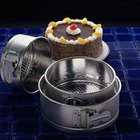
How to Keep Cake Edges From Hardening ...
Freezing a Cake With Buttercream ...

The Best Cake and Cupcake Tools and ...

How to Make a Cruise Ship-Shaped Cake
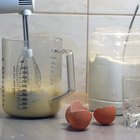
How to Cook a Cake in a Pyrex Measuring ...

How to Make a Cake Board
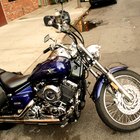
How to Make a Motorcycle Birthday Cake
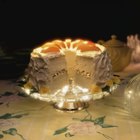
How to De-Pan an Angel Food Cake

How to Remove a Cake From the Pan
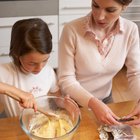
Directions for an Egg-Shaped Cake for ...

How to Bake With a Pressure Cooker

How to Make a Fake (Faux) Cake

How to Defrost a Frozen Cake With ...

How to Make a Bible-Shaped Cake
Easy Strawberry Cake Recipe

How Long After You Bake Should You Put ...
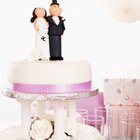
How to Cut a Tiered Wedding Cake
References
Writer Bio
Serena Styles is a Colorado-based writer who specializes in health, fitness and food. Speaking three languages and working on a fourth, Styles is pursuing a Bachelor's in Linguistics and preparing to travel the world. When Styles isn't writing, she can be found hiking, cooking or working as a certified nutritionist.
Photo Credits
Hill Street Studios/Blend Images/Getty Images